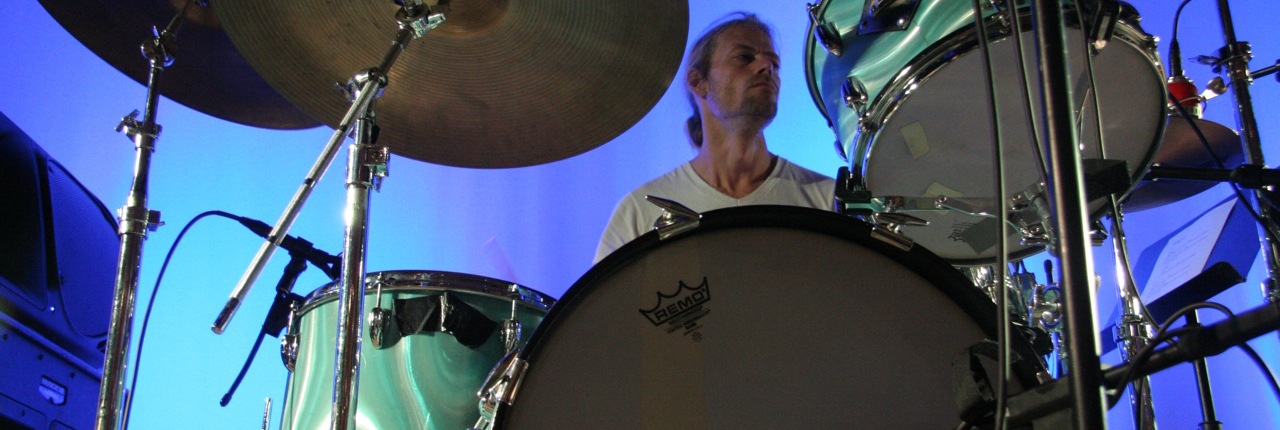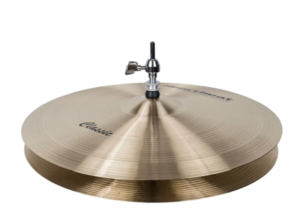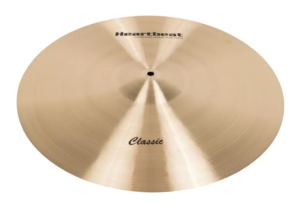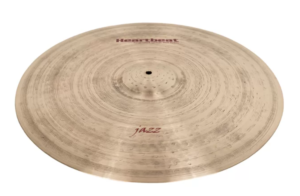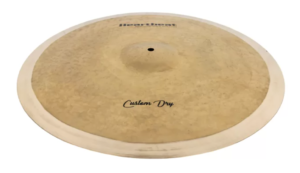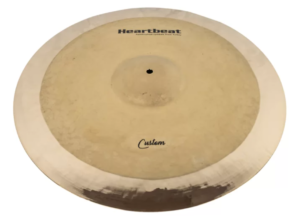Drums: Here’s our recipe for success in the drum dept.
Every church should have a house kit that they keep tuned and maintained. Folks who are serious about drum tone will check and tweak tuning as needed every show. Even if you had someone proficient in drum tuning, some who works at a studio and knows how to tune drums comes out quarterly, you’d be in great shape.
A drum set can be somewhat inexpensive and still sound great. So long as the shells are quality and in decent shape, the suitable heads and dampening will get the tone we need. If you’re in the market for a new kit check out the Yamaha Stage or Tour Customs, Gretsch Catalinas, PDP Concept or Pearl Decade.
We like to break down the setup into three areas:
- Kick & Snare – The kick and snare are at the core of our mix. We need them to sound great and play well with other elements in our mix.
- Cymbals – The wrong cymbals can sound trashy and bleed in vocal mics on stage. The right cymbals will sound warm and sit nice in the mix.
- Toms – We are looking for the right tuning, tone and a medium decay to help our toms rock the mix.
KICK:
The Evans EMAD 2 just works. Add the Evans pillow to sufficiently dampen the drum. Tune heads to lowest resonant frequencies. Watch for wrinkles and make sure both heads are just tight enough to remove all wrinkles.
- 1st Choice: Evans EMAD 2 Clear Bass Drum Head, 2nd Choice: Remo Powerstroke 3
- Evan Pillow Pack
- 1st Choice: Remo Fiberskyn 3, 2nd Choice: Evans EQ3
- Tune to the lowest resonant frequency with no wrinkles
- Add the Roland TM-2 & RT30K for a Kick Sample Trigger that really works
SNARE:
This snare recipe produces a tone that fits perfectly into the mix. A deep fundamental frequency combined with the snap of a 42 stand snare wire allows us to bring the snare forward in the mix while carving out a space for our vocal.
- 1st Choice: Ludwig Black Beauty 14″X8″, 2nd Choice: Brass 14″X8″ Snare
- 1st Choice: Remo Powerstroke 4 Clear Dot, 2nd Choice: Remo Control Sound Reverse Dot
- Bottom head: Remo Ambassador Clear or Hazy – really tight
- 42 Strand Snare Wire
- Evans Tone Ring for just the right amount of dampening
- Lug locks – to hold tuning
- Add the Roland TM-2 and the RT-30HR Dual Zone Trigger for Snare Sample Trigger that works great. Mute the Rimshot zone so you don’t have to chase ducking the sample on rimshots.
TOMS:
Be sure to replace both the top and bottom heads. Bottom heads are often neglected but they are core to tone of the drum. Tune both heads to match each other. Go low. Add the evans ring to dampen just the right amount.
- Vintage Emperor – Tuned as low as resonantly possible without wrinkles
- Bottom head: Ambassador Clear
- Same tuning top & bottom with toms
- Evans Rings on all Toms
CYMBALS:
We going for big and dark here. We want out cymbals to sit in the mix and not sound trashy. We’re also interested in Hi-Hats that are naturally subdued to keep the hi-hat bleed to a minimum.
- Crash:
- 1st Choice: Instanbul – Agop 22″ & 24″ Traditional Dark Crash,
- 2nd Choice: Heartbeat Classic 20″ Crash, 22″ or 24″ Custom Dry Lite Ride, Custom Ride or Jazz Ride
- Ride:
- 1st Choice: Istanbul 24″Joey Waronker Signature Agop Jazz Rid
- 2nd Choice: 24″ Hearbeat Custom Ride, Custom Dry Lite
- HiHats:
- 1st Choice: Istanbul Agop Hi-Hat 30th Anniversary
- 2nd Choice: Hearbeat Classic 15″ HiHat
A recommended Mic Package
There are so many options when it comes to mics for a drum kit. Sometimes its hard to know where to invest. We recommend focusing on the Kick, Snare and Overhead mics. These 4~6 microphones capture the core parts of your drum tone that really needs to sit will in the mix.
Kick – One of: Shure Beta 52, Audix D6 or DPA 4055 and the Shure Beta 91
The Beta 91 resides inside the drum, halfway back works great. The 52/D6/4055 Might work well in-line with the port on your front drum, or it may want to get closer to the batter head.
Snare – Shure SM57 works great for top and bottom mics. Also check out the Shure 545 for a nice HF boost.
Snare top sits about 2 fingers over the head, and 2 fingers in from the rim. It points at the center of the snare head. The bottom mic is 3~4″ off the bottom of the snare pointed at the snare wires at a 45″ angle and inline with the snare wires.
Hi-Hat – Shure KSM137, Audix i5, Shure SM7, DPA 2011. Hi-hat mic sits over the middle of the backhalf of the hat about 5″ above the hi-hat.
Toms – Audix D4, Audix D2, Shure Beta 98, DPA 4099. Tom mics should be located 2″ above the head and pointed towards the center of the drum head.
Overheads: Shure KSM137, Shure KSM27, AKG C214, Nuemann KM184
Don’t forget to implement the equidistant triangle system with your overheads. Using a rope or a cable, measure the distance between the top log of your snare and one overhead. Not match the distance from that same lug to the other overhead. The two overheads should ALSO be the same distance apart as they are from the snare lug. It takes a bit of finessing but the phase coherency makes it worth the effort in the mix!
HOUSE KIT RULES
- As tempted as drummers often are to tune the drums every time they sit at your house kit, please encourage them to check the tuning but keep the pitch of each drum the same.
- Kick Drum patches are not needed. Use the felt side of the beater for an even tone.
- Be prepared to replace the snare head every month, kick and toms heads twice a year.
- Hire a studio drummer to drop by and tune your drums quarterly to maintain the tuning and tone.
- Keep the Evans rings on the snare and toms even if the player doesn’t like them.
- Consistency, week to week, is how we blaze through soundcheck and get onto rehearsal. The less tweaking, the better.
- Power tip: Spin the snare, so the snare wires and top/bottom mics line up.
- Power tip: Make sure your overhead mics are equally spaced with each other and the top lug (closest to the kick) on the snare drum. Perfect triangle.
Ready to buy?
Here are amazon links to all the parts mentioned in this article. They are affiliate links and we appreciate your support when you use them.

